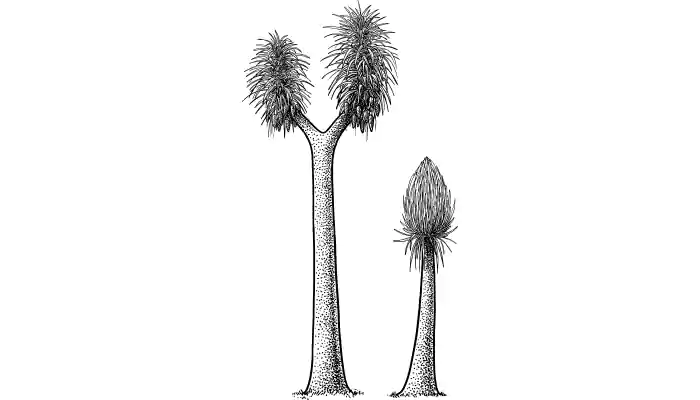
While almost extinct plants ceased to exist due to natural reasons, in the last couple of centuries human activities have destroyed their habitat. Habitat disturbance, climate change, invasive species, or pathogens may be the causes of plant extinction. Here are some historical plants that have gone extinct.
Sigillaria
Sigillaria plant thrived during the Carboniferous Period of 300 to 360 million years ago and looks like a Joshua tree. This tree-like plant grew on the floor of a peat-forming swamp and was propagated by spores present in the cones near the end of its branches. Sigillaria is the most common plant from which fossil fuels are made and its fossil was discovered in coal mining operations across the world.
Frankliniaalatamaha
Named after Benjamin Franklin, Frankliniaalatamaha was last seen in the wild in 1803. Native to the southeastern United States, the plant was only discovered by non-native Americans in 1765. The exact reason for its extinction is not known however, it does have a cultivated species as humans preserved its flowers for theirbeauty.
Atriplex tularensis
Last seen in 1991, Atriplex tularensis, an annual herb,flourished in the alkaline salt pans at the southern end of California's Central Valley. The cause of extinction is considered to be the rapid expansion of agriculture. Atriplex tularensis was deprived of water as the central valley’s farmers and communities drained all the underground water and inland lakes thus, leading to its extinction.
Sophora toromiro
Toromiro tree was once widely prevalentonEaster Island (Rapa Nui). But the tree is now declared extinct in the wild despite efforts made in the 1960s to cultivate it from the seeds collected. Some of the reasons for the loss of this habitat are over-harvesting, climatic changes, and cultural changes, but the loss of Easter Island haunts mankind.
Small Solomon’s Seals Variety
Although most small Solomon’s seal is flourishing in the wild, one of its varieties, Polygonatumbiflorum var. melleum, is believed to be extinct. Historically, Native Americans used to eat young stems of Solomon’s seals, or cooked their starchy roots. There is uncertainty around the existence or fate of hundreds of such plants.
Orbexilumstipulatum
Also known as leather-root, this plant was a native of Rock Island, Kentucky, and was last seen in 1881. This plant was dependent on buffalos to propagate, but when overhunting reduced the population of buffalos in the region, its survival became difficult. A dam constructed on-site further drove the plant into extinction.